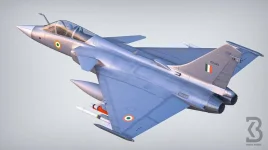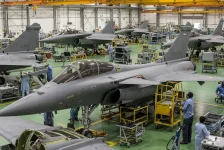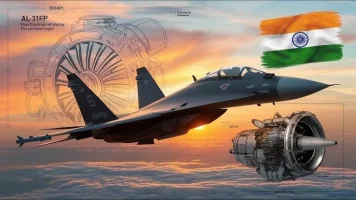- Views: 3K
- Replies: 16
India stands at a critical juncture in its decades-long ambition for self-reliance in defence technology, with the future of its advanced fighter jet programs hinging on the development of a powerful, indigenous engine.
According to analysis from defence experts, including former Indian Air Force (IAF) officer Group Captain Ajay Ahlawat (Retd), the domestically developed Kaveri engine is a story of partial success but falls short of powering the nation's next-generation aircraft, forcing a pivotal choice between slower, independent development and faster, foreign collaboration.
The original Kaveri engine program, initiated in 1986 by the Defence Research and Development Organisation's (DRDO) Gas Turbine Research Establishment (GTRE), has successfully produced a functional engine.
While this is a significant achievement, its performance is insufficient for the upcoming Advanced Medium Combat Aircraft (AMCA) and the Tejas Mk2. This capability gap has led to a consensus that a new engine, dubbed "Kaveri 2.0," is essential, sparking a debate on the best path forward to secure India's air superiority.
The Kaveri Legacy: A Foundation Built on Experience
After nearly four decades of research and development, the Kaveri program has yielded an engine capable of producing approximately 49 kilonewtons (kN) of dry thrust and 78 kN with an afterburner.This effort, while not meeting the final requirements for the Tejas Light Combat Aircraft it was designed for, has provided India with invaluable experience in complex engine technologies.
Experts note that the program has been instrumental in developing domestic capabilities in single-crystal blades, advanced materials, and blade-cooling techniques.
The engine has undergone extensive testing, including on an IL-76 aircraft in Russia, and a marine variant has been developed for naval ships.
This vast accumulation of data and technical knowledge, achieved at a cost far lower than global benchmarks, provides a solid foundation for future endeavours.
The Thrust Deficit: Why a New Engine is Non-Negotiable
Modern air combat demands high performance, including the ability to super-cruise—fly at supersonic speeds without engaging fuel-guzzling afterburners.India’s fifth-generation AMCA and the upgraded Tejas Mk2 are designed to compete with advanced aircraft like China's J-20 and require engines in the 100-130 kN thrust class.
The current Kaveri engine, even with potential upgrades, is projected to peak at around 85 kN. Its core design is considered technologically mature, offering little room for the significant performance gains required.
This reality makes the development of an entirely new engine, or Kaveri 2.0, an urgent necessity to prevent delays in these critical IAF modernization projects.
The Strategic Crossroads: Indigenous Development vs. Global Partnership
India faces two distinct paths to acquire the necessary engine technology, each with significant strategic implications.1. Fully Indigenous Development
This approach would grant India complete ownership of the engine's intellectual property (IP), ensuring total strategic autonomy.An Indian-made engine could be exported to friendly nations and adapted for other uses, such as industrial power generation, perfectly aligning with the Aatmanirbhar Bharat (Self-Reliant India) vision.
However, this path is fraught with challenges. Experts estimate it could take 10 to 15 years and over $2 billion to develop such an engine from scratch, with a high risk of delays and cost overruns.
2. OEM Collaboration
Partnering with an established global Original Equipment Manufacturer (OEM) like Safran (France), General Electric (USA), or Rolls-Royce (UK) offers a faster and less risky alternative.These companies possess the proven expertise and technology that could deliver a production-ready engine within 7 to 10 years, aligning with the AMCA's projected 2035 production start.
A deal with French firm Safran to co-develop a 110 kN engine is reportedly in advanced stages. Such a partnership would involve significant Transfer of Technology (ToT), building India’s domestic skill base for future projects.
The primary concern remains the extent of sovereign control, as foreign partners could impose restrictions on upgrades or exports.
Balancing Speed, Cost, and Sovereignty
The final decision rests on balancing immediate operational needs against long-term strategic goals. Delays in engine development directly impact the timelines for the AMCA and Tejas Mk2, which are vital for maintaining a credible defence posture in a challenging region.The reliance on foreign engines is already a known bottleneck. Supply chain issues with GE's F404 engines have reportedly slowed the delivery of Tejas Mk1A jets to the IAF.
Any future partnership must therefore guarantee India sufficient control over manufacturing and maintenance to avoid similar dependencies.
The recent government approval for a new execution model for the AMCA, allowing for greater participation from the private sector, signals a willingness to adopt flexible and collaborative approaches that could accelerate development.
Ultimately, whether India builds its next-generation fighter engine alone or with a partner, the call to action from defence analysts is clear: the program must be funded and prioritized to ensure the nation achieves true self-reliance in the skies.



